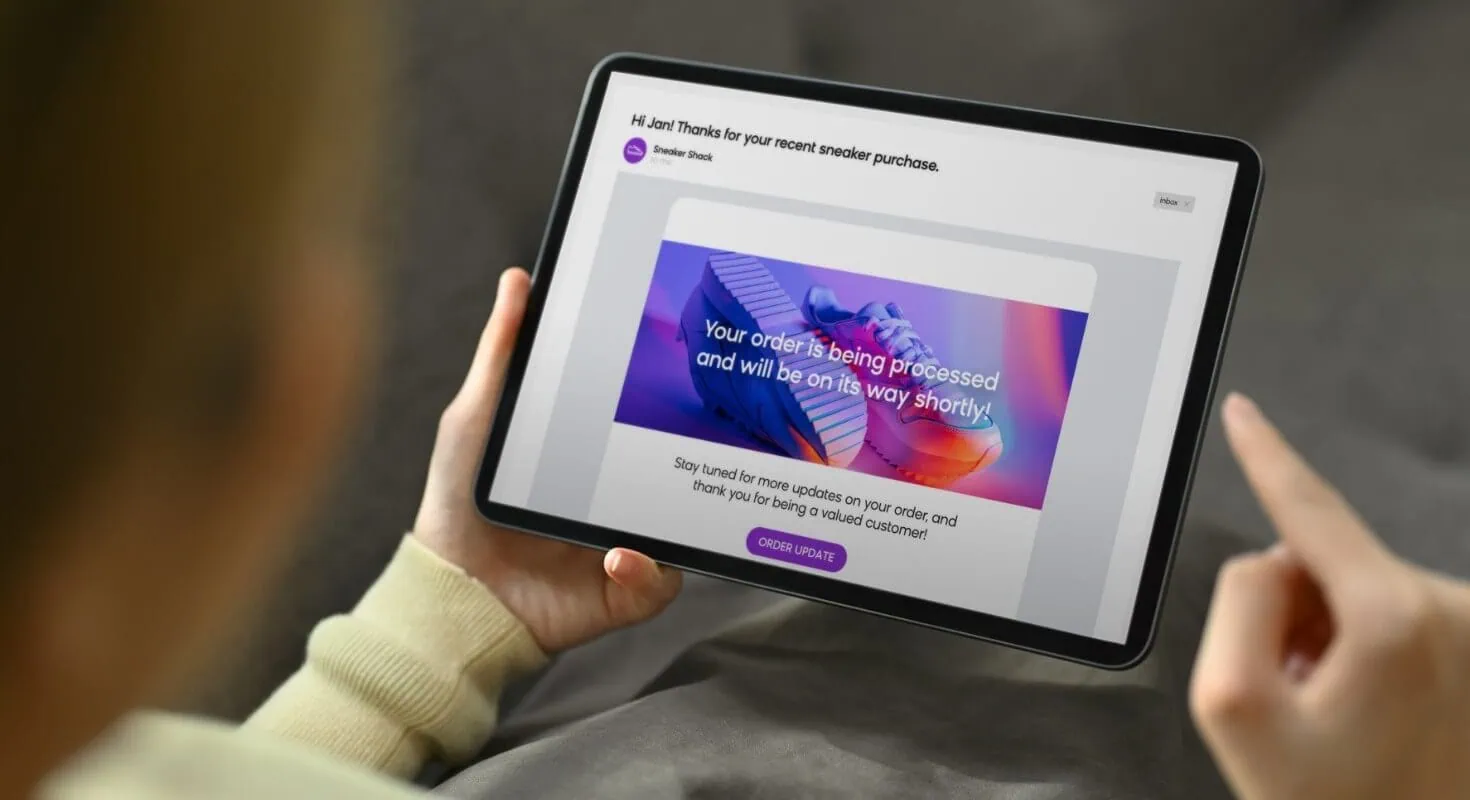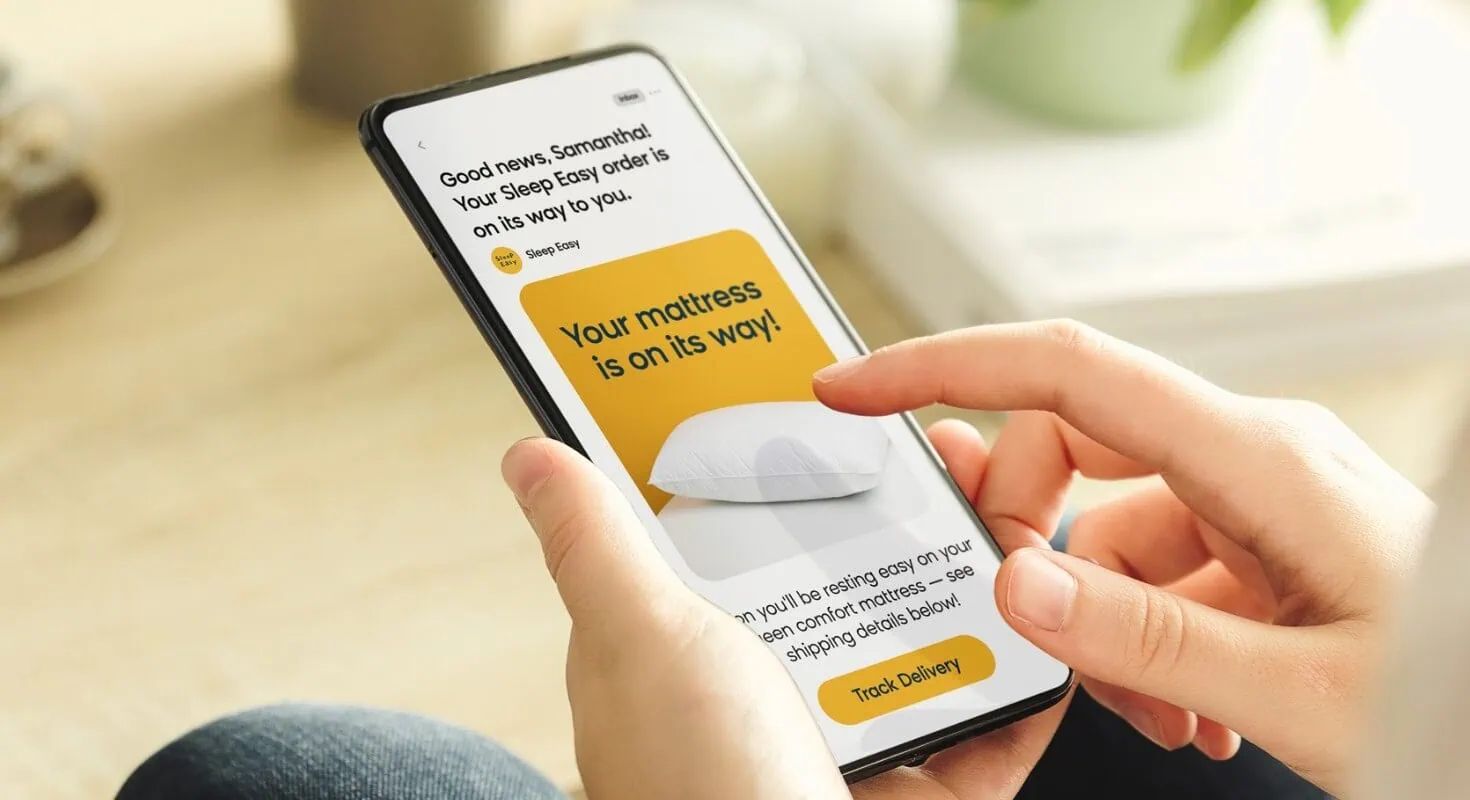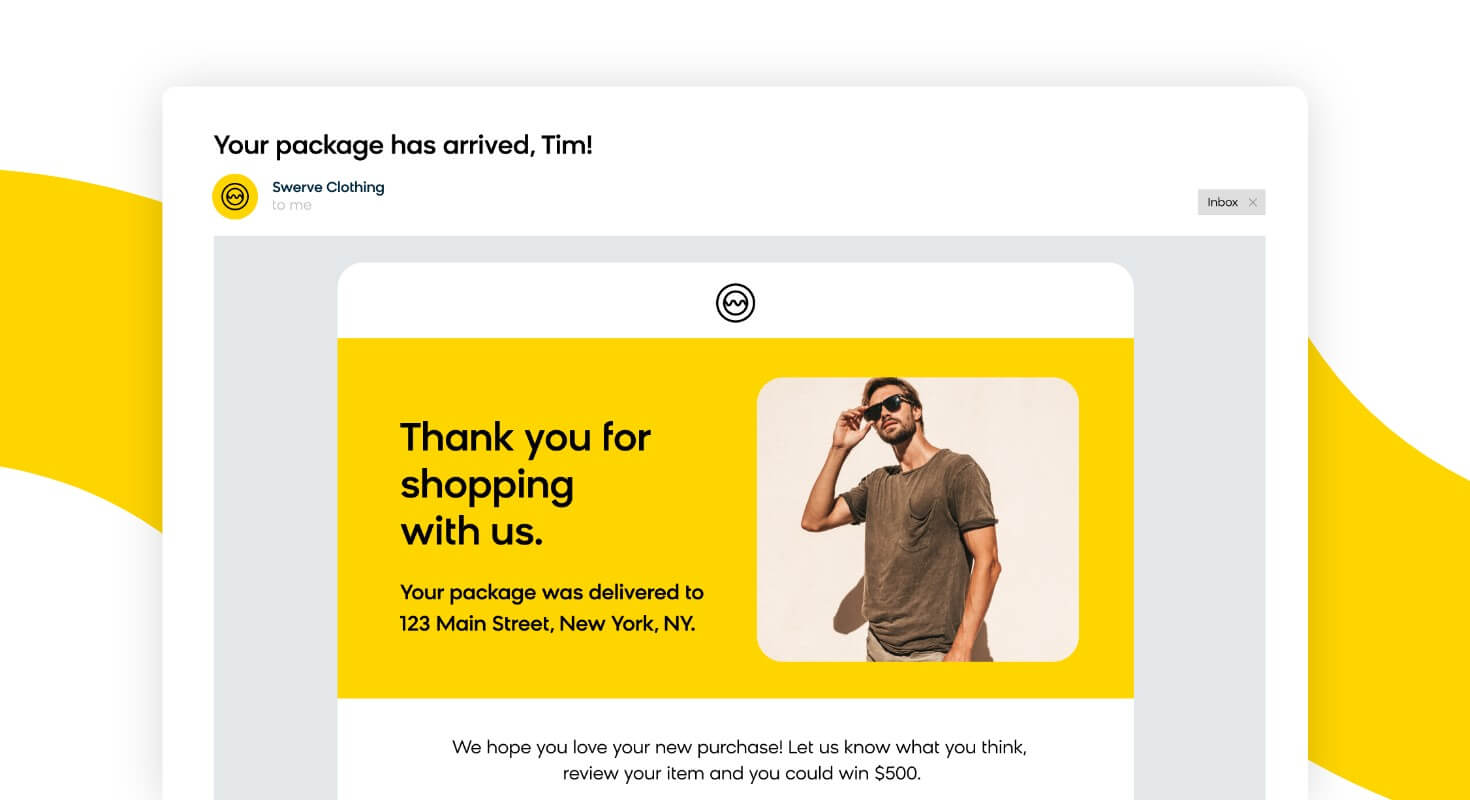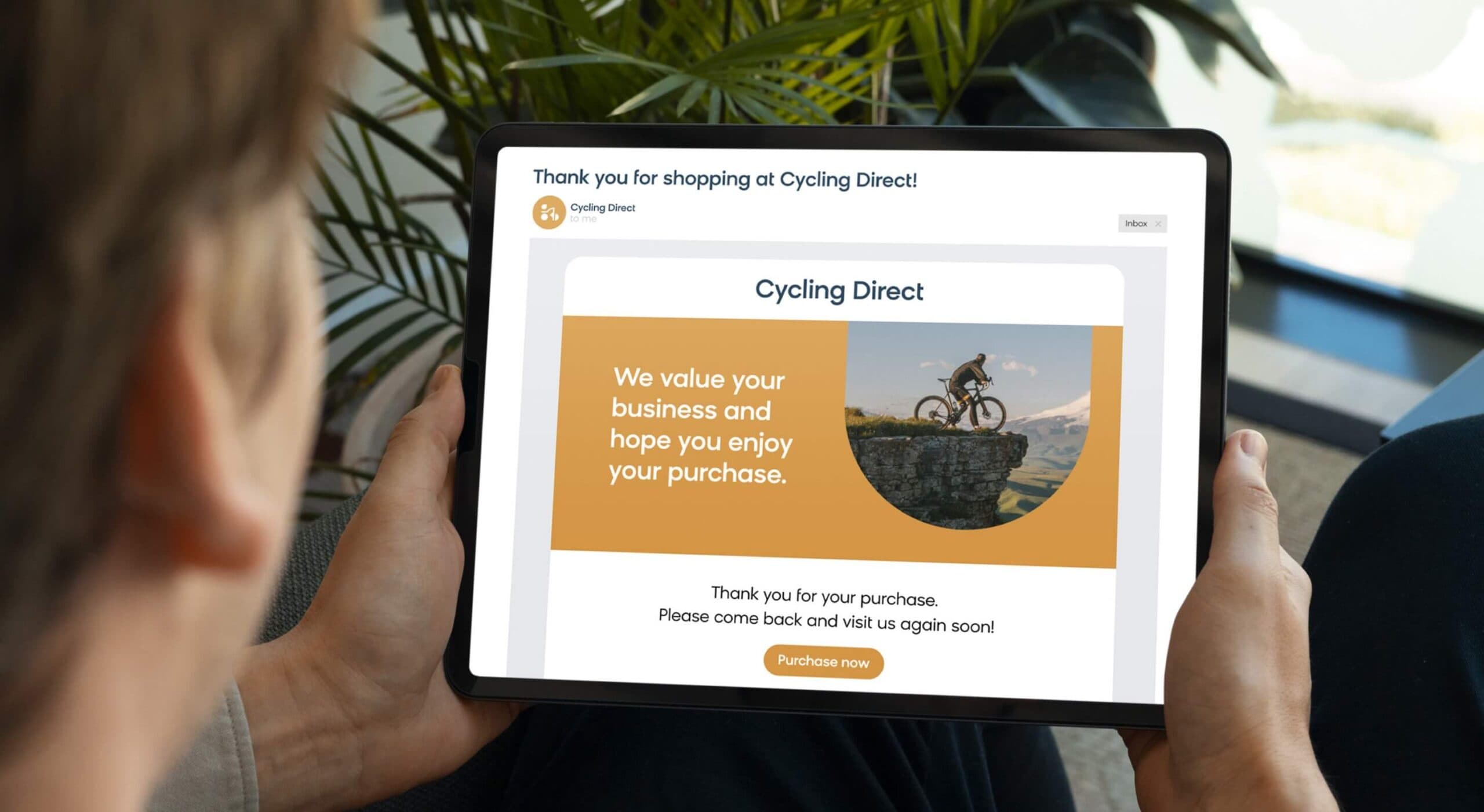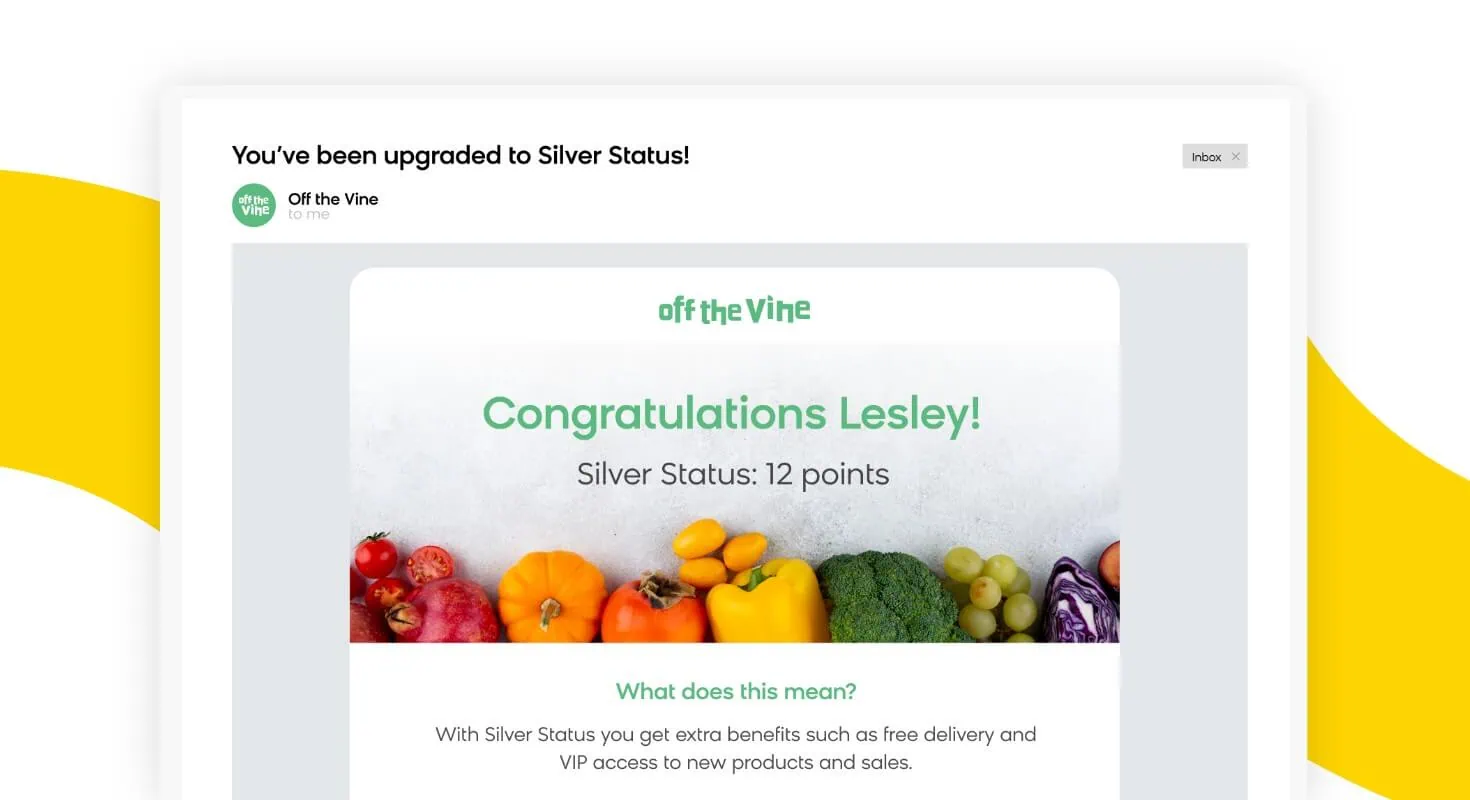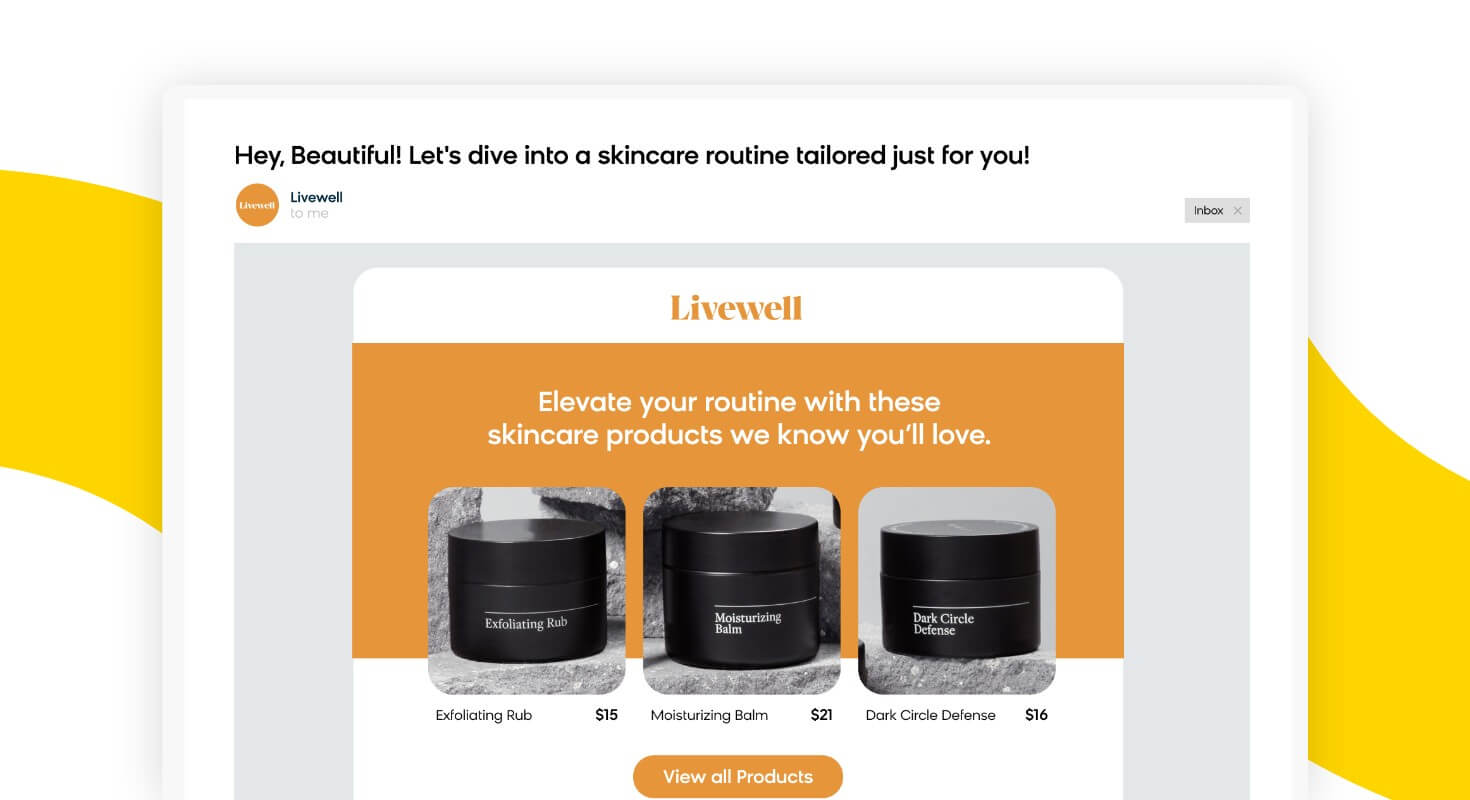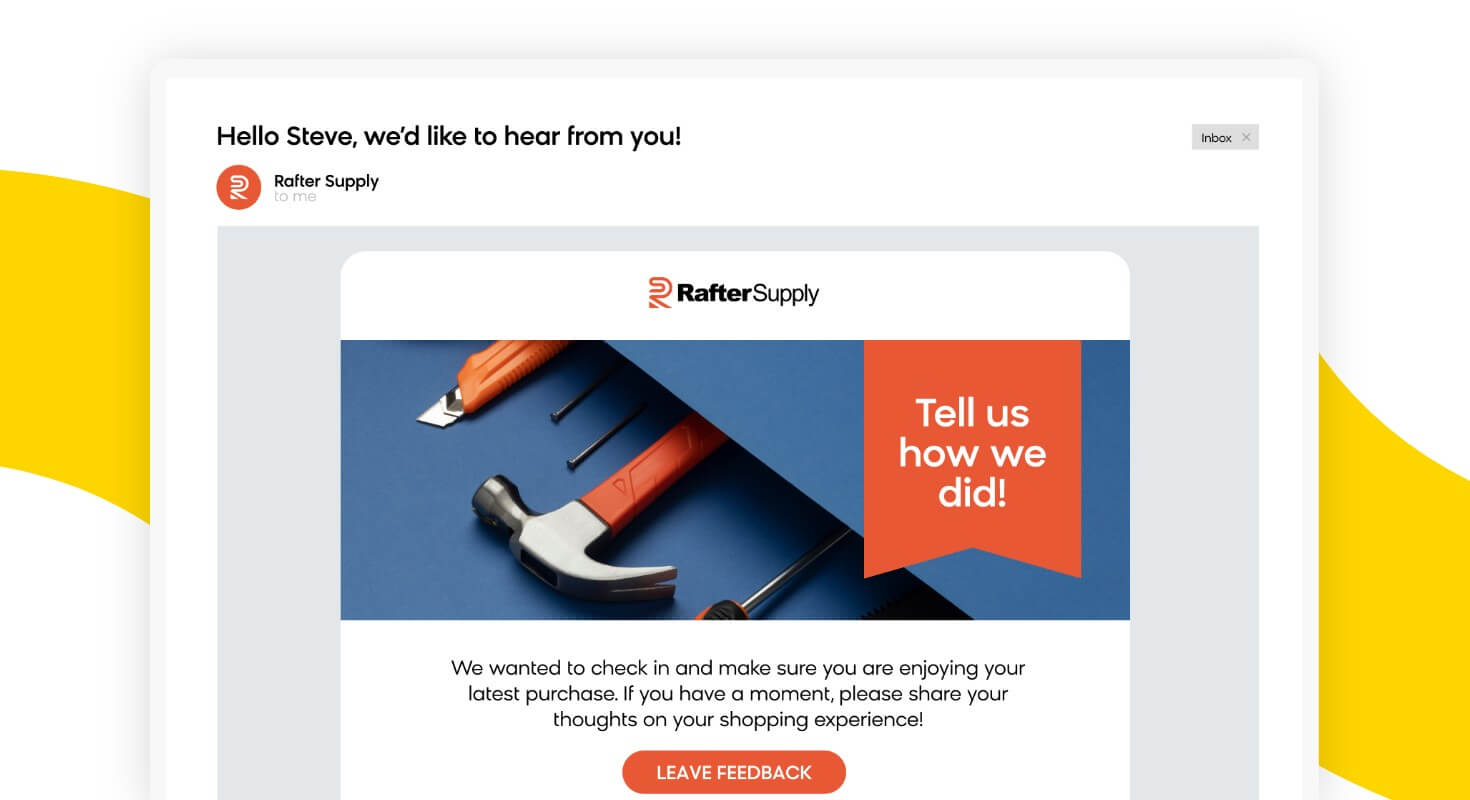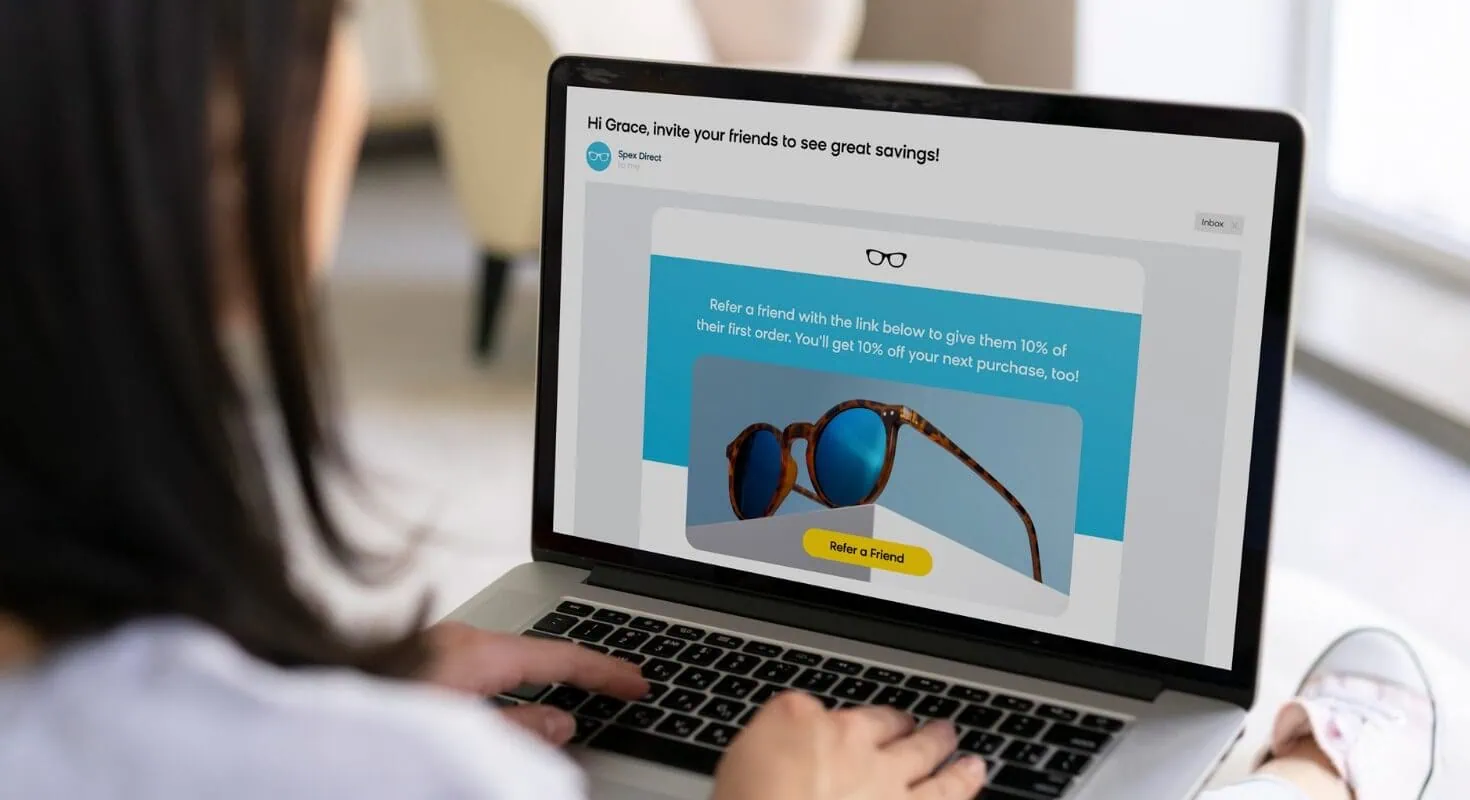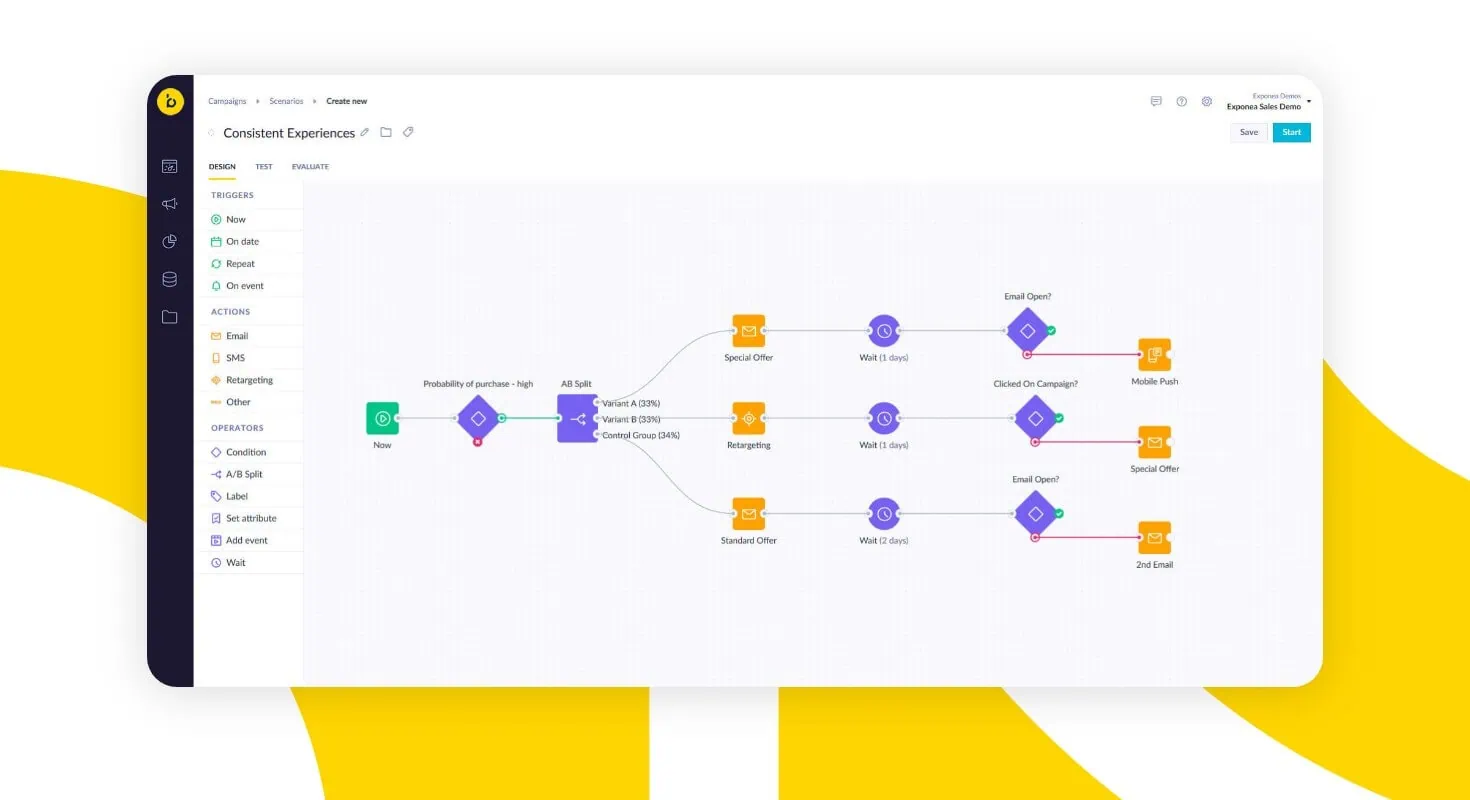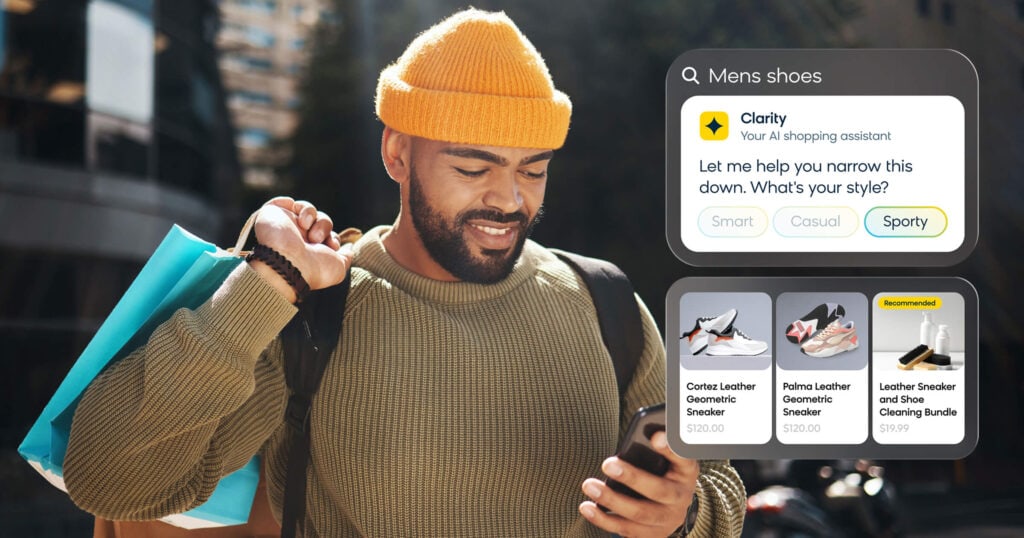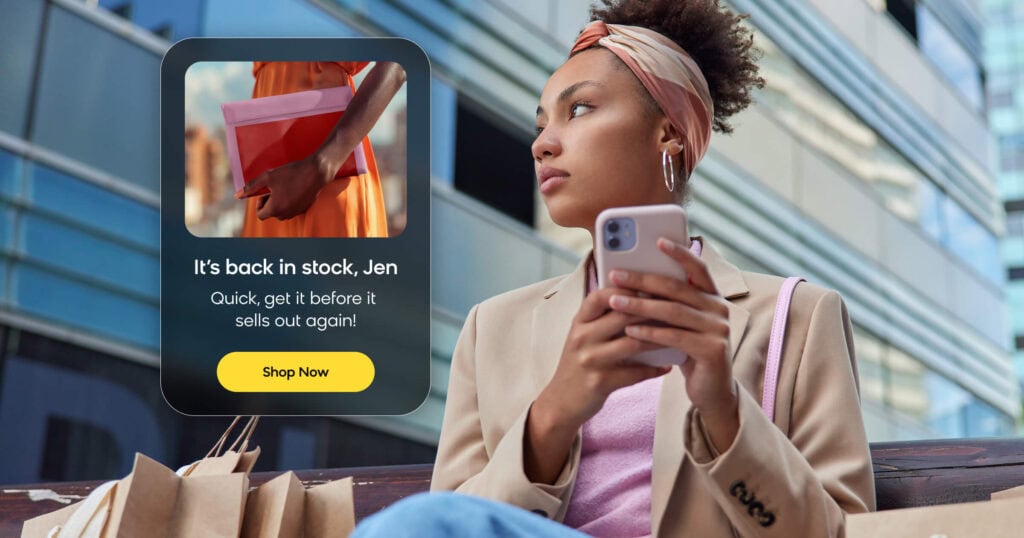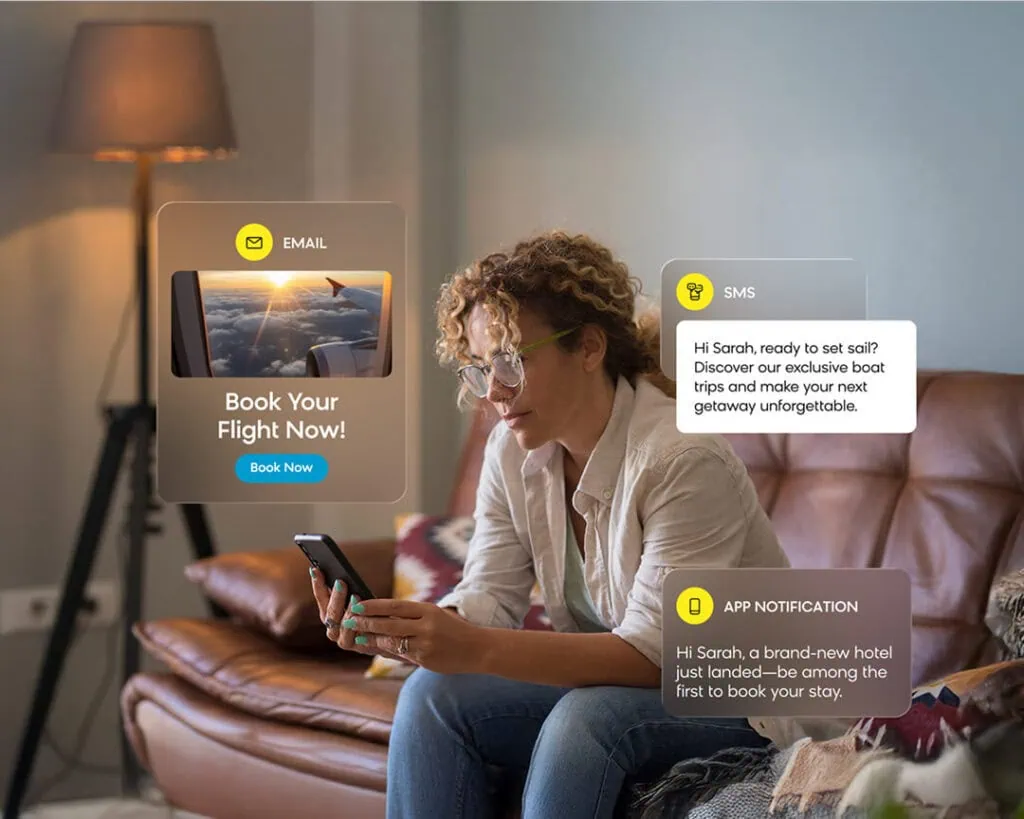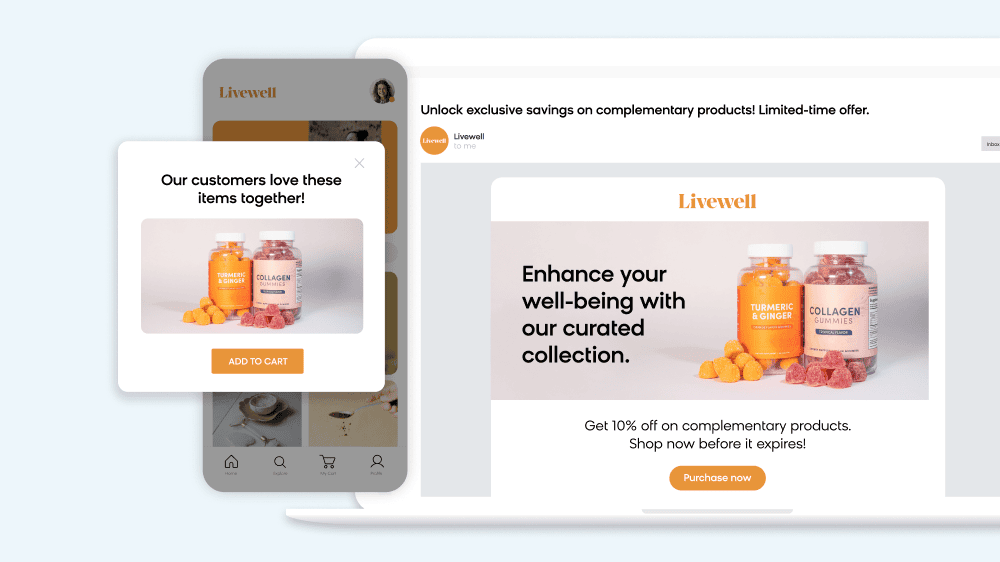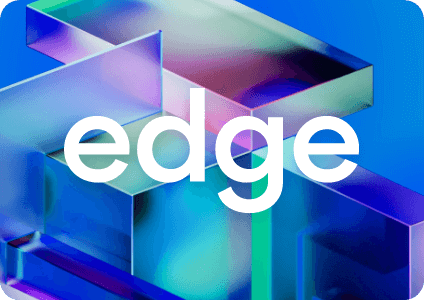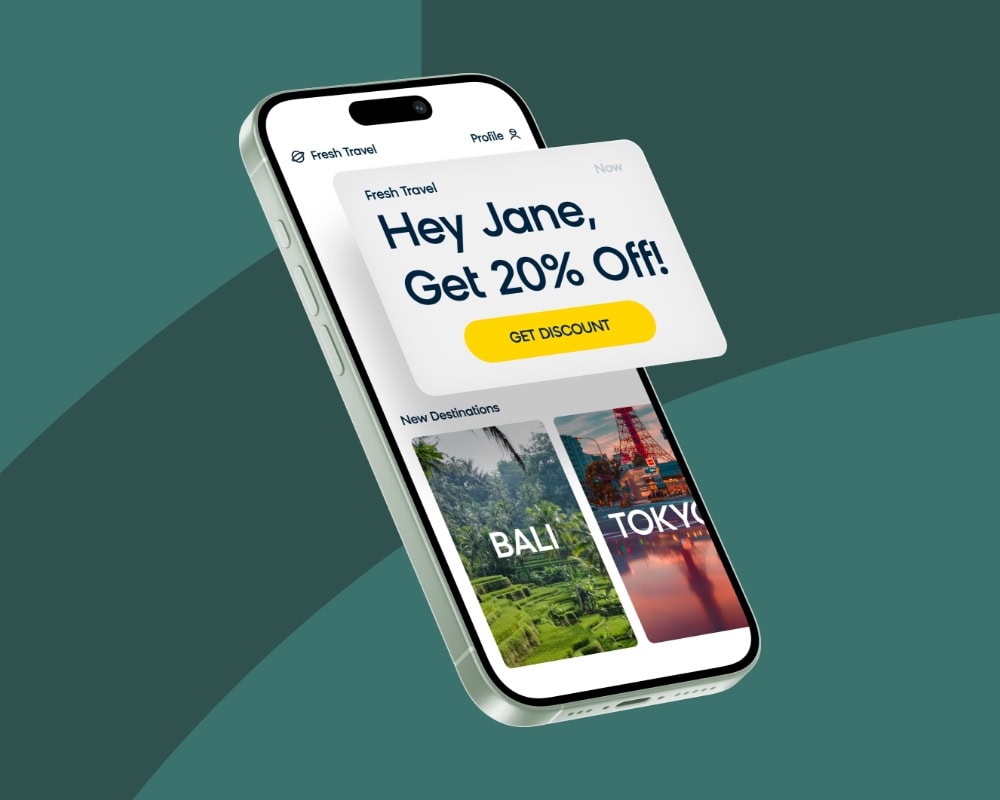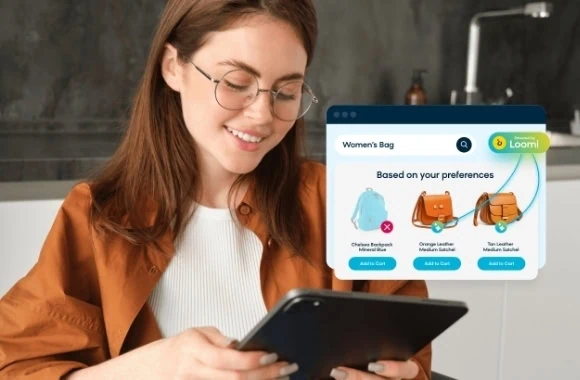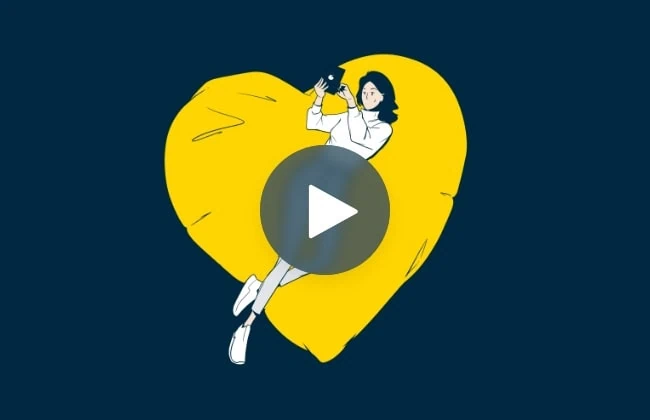Of all the different types of email campaigns that every marketer should have in their email strategy, the post-purchase email is one of the non-negotiables.
Why? Because marketing doesn’t stop when a customer makes a purchase. Your new customers can become longtime brand advocates with the right messaging — all it takes is the right email automation strategy to keep the customer journey going.
That’s why we’ve written this resource designed to elevate your post-purchase email marketing. Keep reading to learn how you can craft post-purchase emails that yield impressive results, including 10 proven examples and best practices for 2025.
What Are Post-Purchase Emails?
In simple terms, post-purchase emails are automated messages sent to customers after they’ve made a purchase from your business. But there are many different types of post-purchase messages you can use to connect with and engage your customers — order confirmations, thank-you messages, review requests, and more.
These straightforward automated emails are an essential part of customer service in the modern ecommerce landscape. They serve as a bridge between the moment of purchase and the delivery of the product, keeping the customers engaged and informed.
Post-purchase email campaigns are so valuable that they’ve become standard practice for every business, no matter the size or industry. From niche online sellers to titans like Amazon, sending an order confirmation email immediately after a customer makes a purchase is paramount. And the more detailed you make your customer’s post-purchase experience (with details like an order summary, an estimated delivery date, and a link to track the order), the better.
The Importance of Post-Purchase Emails
Post-purchase emails aren’t just a good idea. They play vital roles in the customer journey, helping businesses increase customer retention, cross-sell to existing customers, and increase repeat purchases from an audience that has already committed to buying from your brand.
The ability to engage with established customers is one of the most rewarding avenues for your digital marketing efforts. They are your most valuable audience — 65% of a company’s business comes from existing customers.
With more than half of all purchases likely to come from repeat buyers, your brand needs to focus on nurturing a loyal audience and offering them as many ways to reconnect and engage with your business as possible, which is exactly what a post-purchase email provides.
Here are some of the most worthwhile benefits to be gained with a well-thought-out post-purchase email strategy:
Meeting Customer Expectations
First and foremost, post-purchase emails keep your customers informed on the status of their purchase, which is an expected part of the modern customer experience.
In today’s digital age, customers want real-time updates about their orders. They prefer to know when their order is confirmed, when it’s shipped, and when it’s expected to arrive at their doorstep.
Post-purchase emails fulfill this expectation, ensuring that the customer is not left in the dark after making a purchase. And studies show that customers appreciate being kept in the loop with a post-purchase email flow — post-purchase emails enjoy a 217% higher open rate than traditional emails, proving just how welcome these messages are.
Trust Building
Post-purchase emails also play a crucial role in building trust with your customers. These messages often serve as the first email contact that your business has with buyers, serving as proof that their order is being processed and on its way, which is an important step to take in building lasting customer connections.
With an effective post-purchase email, marketers can establish and nurture customer relationships, setting the tone for the level of engagement and the quality of customer care that your ecommerce business provides.
Moreover, when things go wrong, such as an order delay, companies can use post-purchase emails to inform customers about the situation, apologize, and offer a coupon for future orders, thereby turning a negative experience into a positive one.
Providing a positive experience should be a priority for your post-purchase efforts. Customers who have the best past experiences with a brand spend 140% more compared to those who have a poor experience, so it’s in your best interest to craft post-purchase emails that establish trust and build customer loyalty.
Increased Orders
Taking the time to craft the right post-purchase email campaign strategy can reap exponential returns. The more you engage with your customers and stay top of mind after a purchase, the more likely they are to consider future purchases and repeat sales.
By making reordering easier and highlighting after-order support and warranties, post-purchase emails can increase the lifetime value of your customers. And, for products that are often reordered, sending a reminder email when the customer is likely to run out can prompt them to make another purchase.
Post-purchase follow-ups tend to be some of the most lucrative email campaigns that marketers can employ. With order confirmation emails achieving open rates of 114.30% compared to bulk emails at 14.40%, and follow-up emails showing 40.5% open rates and 6.4% click rates, ecommerce businesses can’t afford to neglect post-purchase communication.
10 Post Purchase Email Examples That Drive Results
Looking to craft a post-purchase experience that fosters more customer engagement? Here are 10 types of post-purchase emails used by successful businesses:
1. Order Confirmation Email Example
Order confirmation emails are the bread and butter of follow-up communications. They’re the easiest post-purchase message to integrate into your customer journey and establish your brand as a company that prioritizes great customer service.
By sending an email that provides all the necessary details about the customer’s order, you can reassure them that their purchase was successful and pave the way for future messages that establish an ongoing customer relationship.
2. Shipping Confirmation Email Example
Shipping confirmation emails are functional and straightforward, but they’re crucial for providing peace of mind to your customers that their order is on its way. It’s a touchpoint that businesses can leverage to reinforce customer confidence in your brand.
There are also plenty of ways to personalize shipping confirmation emails and make them appear less generic. For example, adding a tracking link in your shipping confirmation email will let customers know exactly when their order will arrive. This is a great addition that makes customers feel taken care of.
3. Delivery Confirmation Email Example
Delivery confirmation emails are a great follow-up to shipping confirmations in the post-purchase flow.
A well-crafted delivery confirmation email can significantly enhance the customer experience. It allows you to connect with your customers on a personal level, reassuring them that their package has arrived and making them feel valued and appreciated.
4. Thank You Email Example
Of all the email marketing wins you can achieve as a marketer, a thank you email is the easiest. These simple messages are more than just a polite gesture. They’re a powerful tool that reflects your brand’s commitment to appreciating and valuing every customer.
When a customer receives a thank you email, it sends a clear message that you recognize the choice they have to shop your brand, and that your business doesn’t take them for granted.
This confident yet friendly communication fosters a sense of trust and respect, reinforcing your brand’s image as one that truly cares about its customers. Plus, it presents an opportunity to continue engaging with customers in a smart and relatable way.
A well-crafted thank you email can transform a simple acknowledgment into a meaningful conversation, setting the stage for future interactions. Whether that entails suggesting similar products, offering helpful tips or a special discount for future purchases, or sharing engaging content, you can keep the conversation going and encourage customers to keep your brand top of mind.
Strategic use of thank you emails not only enhances customer satisfaction but also drives repeat business, making them a vital component of successful post-purchase email marketing.
5. Loyalty Program Email Example
Loyalty programs should play a key role in your post-purchase email marketing strategy, acting as a robust tool to foster customer engagement and retention.
With a loyalty rewards program, you can prove that you value a customer’s patronage and offer post-purchase incentives that invite them to keep interacting with your brand. They’re a great way to turn shoppers making their first purchase into repeat customers.
Plus, sending emails that reward customer loyalty and incentivize purchases provides more avenues for you to understand each customer’s individual preferences, helping you connect with your customers on a deeper level.
A well-structured loyalty program communicated through smart, engaging emails can transform a simple rewards system into a meaningful relationship. By personalizing your loyalty messaging, offering exclusive benefits, and consistently showing gratitude for repeat customers, you can cultivate a strong bond with your audience and increase your customer lifetime value.
6. Cross-Sell Email Example
By making their first purchase, a new customer has already proven that they appreciate and value your brand. So it’s a safe bet that they’ll like other products or services that your business offers.
That’s why upsell and product recommendation emails are so effective as post-purchase campaigns — they appeal to an audience of already committed customers, offering products or services that complement their purchase or enhance their experience.
This type of post-purchase email is not only great for subtly encouraging additional purchases, but also for reinforcing your brand as a friendly and dependable resource for your customers. It’s another opportunity to deepen your relationship with your audience by personalizing the experience based on their individual wants and needs.
By offering personalized recommendations based on a customer’s purchase history and preferences, you can refine each post-purchase email you send to build stronger connections, deliver more value, and exceed your audience’s expectations.
7. Educational Email Example
Educational emails are a powerful element of any good post-purchase email marketing strategy. By providing valuable insights, tips, and resources related to a purchased product or service, your ecommerce business can enhance the customer’s experience and understanding of your brand.
Educational emails also nurture confidence that your business has your customers’ best interests in mind. By doing more than just selling goods to your customers, your post-purchase emails can solidify your brand’s position as a reliable and trustworthy source of knowledge.
This goes a long way toward building a deeper, more engaging relationship with your shoppers. Each educational post-purchase email they receive primes your audience to look out for more informative messages, which establishes your brand as a trustworthy business that’s invested in your audience’s success.
8. Review Request Email Example
Review request emails are simple and effective ways to make your post-purchase email workflow feel personal and engaging. These emails bridge the gap between businesses and the customer experience, inviting shoppers to have a say in the process and contribute their feedback to make their next purchase even better.
By showing genuine interest in their opinions and experiences, your business can build a relatable and authentic connection with customers. A feedback request shows that you care about their satisfaction beyond the point of sale, letting your audience know that their opinions matter.
Every time your customers respond to a review request email, your business has a chance to learn, improve, and grow in the eyes of those who matter most — your audience. Make sure you prioritize that opportunity in your post-purchase strategy.
9. Referral Email Example
One of the best ways to attract new customers is to encourage your established audience to become brand advocates. By incorporating a referral program into your post-purchase campaigns, you can leverage the goodwill and trust you’ve established with repeat buyers from your business and invite them to spread the word about your company.
Simply by sending a referral link to your email audience and inviting them to share it with others, you can broaden the reach of your brand to influence shoppers you otherwise wouldn’t be able to market to.
Many ecommerce brands offer discounts to customers who refer their friends, thereby expanding their customer base and incentivizing loyal customers with rewards at the same time. It can be a win-win for both your longtime customers and prospective shoppers, and it’s a sure-fire way to boost sales.
10. Win-Back Email Example
Win-back emails are essential for re-engaging customers who haven’t made a purchase in a while. These emails serve as a strategic touchpoint to rekindle interest and encourage dormant customers to return to your brand.
Effective win-back campaigns often include special offers, product updates, or reminders of what customers loved about your brand. They can highlight new arrivals, showcase improvements to existing products, or offer exclusive discounts to entice customers back to your store.
Timing is crucial for win-back emails in 2025. Use customer behavior data to identify the optimal moment to reach out — typically when engagement drops significantly or after a certain period of inactivity. Personalize these messages based on previous purchase history and browsing behavior to maximize their effectiveness.
Post-Purchase Email Workflows: Timing, Sequence, and Triggers
Creating effective post-purchase workflow examples requires careful planning of timing, sequence, and automation triggers to maximize engagement and conversions.
Optimal Timing for Post-Purchase Communications
Research shows that sending your initial order confirmation within minutes of purchase achieves the highest open rates, followed by shipping notifications sent when orders are processed. Thank you emails should be timed based on your specific customer journey, while review request email tips suggest waiting 7-30 days post-purchase to allow proper product experience time.
Multi-Touch Sequence Strategy
Experts generally recommend sending 2-4 post-purchase emails to maximize open and clickthrough rates while avoiding fatigue. A comprehensive post-purchase sequence typically includes: immediate order confirmation, shipping notification, delivery confirmation, thank you message, and strategic follow-up opportunities like educational content, review requests, or cross-sell campaigns. This structured approach maintains engagement without overwhelming customers, with each email serving a specific purpose in the customer journey while building toward long-term loyalty and repeat purchases.
Behavioral Triggers and Automation
Modern email automation platforms enable sophisticated behavioral triggers based on customer actions, purchase history, and engagement patterns. Bloomreach’s automation capabilities can trigger personalized sequences when customers make repeat purchases, abandon their cart post-purchase, or engage with specific email content, ensuring each message feels relevant and timely.
Segmentation Strategy for Post-Purchase Emails
Effective post purchase email segmentation allows you to deliver highly targeted messages that resonate with different customer groups and drive better results.
New vs. Returning Customer Approaches
New customers require more educational content and trust-building messages, focusing on product usage tips and brand storytelling. Returning customers respond better to loyalty rewards, exclusive offers, and advanced product recommendations based on their purchase history and demonstrated brand affinity.
Purchase Value-Based Segmentation
High-value customers deserve VIP treatment with premium support information, exclusive access notifications, and personalized account management details. First-time or low-value purchasers benefit from simplified onboarding sequences, basic product education, and incentives designed to encourage repeat purchases and increase customer lifetime value.
Product Category Targeting
Different product categories require unique post-purchase approaches: fashion purchases benefit from styling tips and seasonal recommendations, tech products need setup guides and warranty information, while consumables require replenishment reminders and subscription offers to maintain customer engagement and drive predictable revenue.
Essential Tips for Successful Post-Purchase Emails
Want to make sure your post-purchase email campaigns reach their full potential? Keep this helpful advice in mind:
Don’t Overwhelm Your Customers
When crafting your post-purchase email flow, be mindful of your customers’ inboxes. Time your emails correctly and combine messages where possible to avoid overwhelming them.
Not only does this make your emails more efficient and relevant, it also helps optimize your email deliverability and keeps your messages out of the spam folder, which no email marketer can afford to neglect.
Understand the Importance of Copywriting
What you say in your emails, and how you say it, can be a make-or-break factor for your post-purchase email success. From the subject line to the CTA, effective copywriting is worth prioritizing to make your emails as engaging and impactful as possible.
Here are a few guiding principles for crafting good copy:
- Avoid generic language and aim to provide value in every message
- Focus on crafting a brand narrative and connecting with customers on an emotional level
- Aim to address concerns, continue the customer journey, and convey your commitment to customer satisfaction
Subject Line Optimization for Post-Purchase Emails
Effective post purchase email subject lines can significantly impact open rates and engagement. Use personalization formulas like “[Name], your [Product] is on its way!” or urgency-driven approaches such as “Review needed: How was your [Product]?” A/B testing different subject line styles—from straightforward “Order Shipped” to benefit-focused “Your style upgrade has arrived”—helps identify what resonates best with your audience and can improve performance by 12.5-29%.
Make Every Email Specific and Personal
Personalization is a concept that should be present in every facet of your ecommerce marketing strategy, and post-purchase emails are no exception.
Personalization is the gold standard of digital marketing. It describes the ideal relationship you can achieve with your audience, offering them a curated experience with your brand that caters to them on an individual level.
And to reach this level of tailored experiences, your efforts need to be fueled by real-time data. You need to know the specific wants, inclinations, and buying habits for your audience.
This information can only be gathered through interactions that your customers have with your business, which is why post-purchase email campaigns can be so beneficial for marketers.
The more your shoppers engage with your post-purchase emails, the more insights you gain that can fuel the next stage of their customer journey. What they click on, which emails they engage with, and which ones they ignore are valuable data points you can use to make future messages more personal and catered to their individual preferences.
With valuable insights on your customer behavior, you can refine your post-purchase emails — and your email marketing strategy as a whole — to speak directly to each customer. For example, you can send more loyalty program emails to shoppers that always engage with rewards incentives, or cater specific recommendations in upsell emails to match the browsing habits of a customer’s latest visit to your website.
The more data you have to inform your marketing efforts, the better your post-purchase emails can be.
Read This Next: Creating the Best Email Marketing Strategy
Why Marketing Automation Is Essential for Post-Purchase Emails
To put an effective post-purchase email marketing strategy into practice, you need the power of marketing automation. It’s the tool that brings all the essential elements of post-purchase campaigns together, allowing you to double down on email personalization and targeted email marketing campaigns that deploy instantly to speak directly to the needs and wants of your audience.
With the ability to prearrange an email workflow that caters to your customers based on real-time triggers, specific behaviors, and timelines, you can seamlessly continue the conversation and deliver the most relevant messages to your audience at the right time.
That’s why Bloomreach Engagement is such a valuable marketing solution — our all-in-one software brings together customer data, omnichannel automation, AI, and advanced analytics in a single platform. With everything you need in one place, you can design personalized email marketing campaigns that will drive more revenue — faster. And we make it easy for you to start anywhere.
Interested in reading about the ROI-driving ways that marketing automation can impact your email marketing strategy? Check out our blog to learn more.
When should you send post purchase emails?
Post-purchase emails should follow a strategic timeline: order confirmations within minutes, shipping notifications within 24-48 hours after processing, and thank you emails based on your customer journey. Review requests perform best when sent 7-30 days post-delivery to allow adequate product experience time.
What should be included in post purchase emails?
Effective post-purchase emails should include order details, tracking information, clear next steps, and relevant product recommendations. Educational content, loyalty program information, and personalized messaging based on purchase history enhance the customer experience and drive engagement.
How often should you send post purchase emails?
Research shows that experts generally recommend sending 2-4 post-purchase emails to maximize open and clickthrough rates while avoiding fatigue. Avoid overwhelming customers by spacing emails appropriately and combining messages when possible.
Do post purchase emails improve customer retention?
Yes, post-purchase emails significantly improve customer retention rates. Studies show they achieve 217% higher open rates than traditional emails and help build trust, encourage repeat purchases, and increase customer lifetime value through strategic follow-up communications and personalized experiences.


